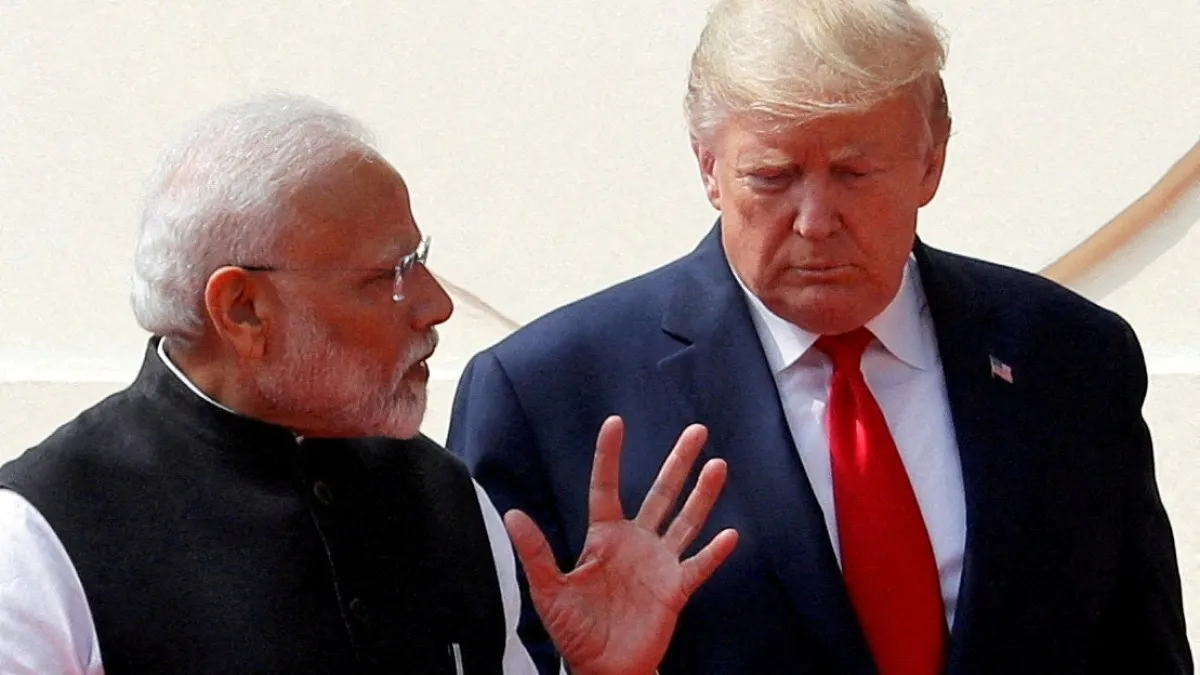
The recent implementation of United States President Donald Trump’s 50 percent tariff on Indian goods is set to significantly disrupt trade dynamics, affecting billions of dollars worth of transactions and threatening thousands of jobs in India, the world's most populous nation. This tariff took effect on Wednesday, following an initial 25 percent tariff imposed on July 30, which was later increased by an additional 25 percent. The rationale behind these tariffs stems from India's ongoing purchase of Russian oil.
The new 50 percent tariff is among the highest rates that the US has enacted and will affect a wide array of products, including gems and jewellery, garments, footwear, furniture, and industrial chemicals. This severe tariff rate will place India at a competitive disadvantage in export markets, particularly against China, and threatens to undermine the economic goals of Prime Minister Narendra Modi, who aims to position India as a major manufacturing hub.
As reported by the Global Trade Research Initiative (GTRI), Indian exports to the US could plummet from approximately $86.5 billion this year to as low as $50 billion by 2026. The GTRI indicates that key sectors such as textiles, gems, jewellery, shrimp, and carpets are among those projected to face the most severe impact, with expectations of a staggering 70 percent collapse in exports, which could jeopardize hundreds of thousands of jobs.
According to MK Venu, founding editor of The Wire, the ramifications of the tariffs will be profound. He highlighted that while India may not be a critical trading partner for the US, the US represents India's largest trading partner. The textiles, garments, gems and jewellery, fisheries, leather goods, and crafts sectors are particularly vulnerable, as they are labor-intensive and often consist of small businesses that may struggle to absorb the financial blow. Venu warns that these sectors could lose market share to countries like Vietnam, Bangladesh, and Pakistan.
In a significant development, the Indian pharmaceutical industry has been exempted from immediate tariff increases, acknowledging the essential role that generic medications play in providing affordable healthcare in the US. Approximately half of the US's generic drug imports come from India, with Indian pharmaceutical exports to the United States valued at about $8.7 billion in 2024. Other sectors such as semiconductors and consumer electronics will also face separate tariffs distinct from the blanket 50 percent rate.
In light of these challenges, Prime Minister Modi has committed to protecting farmers, reducing taxes, and promoting self-reliance. In his Independence Day address, he emphasized that India should pursue self-reliance not from a position of desperation, but with pride. Faisal Ahmed, a professor of geopolitics, notes that enhancing domestic production capacity has been part of Modi’s strategy since the COVID-19 pandemic and suggests that Trump’s tariffs could expedite this process.
To cushion the impact of these tariffs, the Indian government intends to provide financial support to affected exporters and encourage diversification into alternative markets such as Latin America and the Middle East. Venu expresses skepticism regarding the government's assurances, questioning the clarity and feasibility of funding these subsidies. He asserts that the government should have anticipated these developments given the known intentions of the Trump administration.
The recent tariffs compel Indian policymakers to reconsider their reliance on the US market. The Indian media reports that New Delhi may seek to explore multilateral trade agreements—something it previously resisted. Additionally, India is actively pursuing bilateral arrangements with several countries and aims to finalize a trade deal with the European Union by the end of this year.
Economists predict that the tariffs may not have a drastic effect on India’s GDP, projecting a potential decline of about 1 percent. Teresa John, lead economist at Nirmal Bank, estimates a negative impact of around $36 billion, or 0.9 percent of GDP. Earlier forecasts by the International Monetary Fund had estimated India’s economy would grow by 6.4 percent in 2026, but this outlook may now be subject to change.
The backdrop to these tariffs includes failed negotiations to ease trade tensions, predominantly due to Trump’s demands for India to cease its imports of Russian oil and gas. Despite the threat of increased tariffs, India has continued to procure Russian crude oil, albeit at reduced levels. Trump's administration has criticized India for allegedly funding Russia’s military actions through these oil purchases, noting a dramatic increase from 1 percent to 37 percent in India’s Russian oil imports.
With tensions escalating, Trump has voiced concerns over India's high tariffs on US goods, highlighting a significant trade imbalance. While India has made concessions, such as removing levies on certain industrial goods and increasing defense and fuel purchases, Modi has firmly stated that India will not compromise on protecting its farmers. The ongoing tariff war is forcing India to recalibrate its international relationships, potentially mending ties with China and strengthening its historical alliance with Russia. As Venu suggests, the trust between India and the US is at a low point, prompting a reassessment of India’s strategic partnerships moving forward.